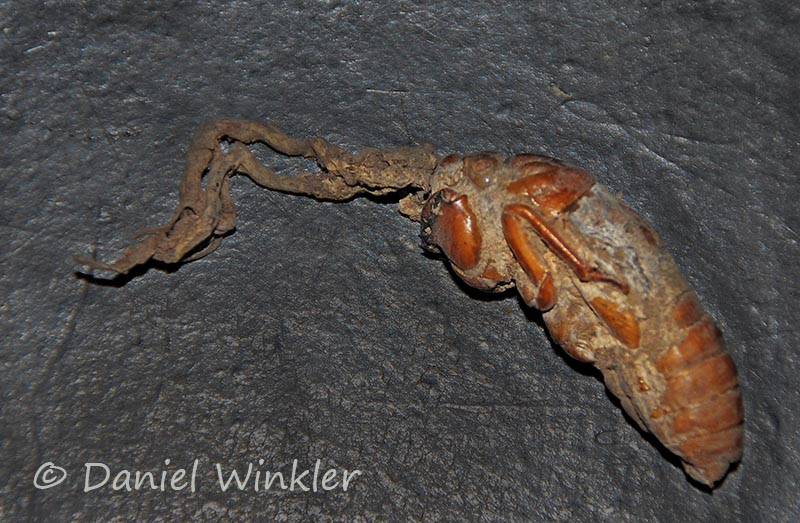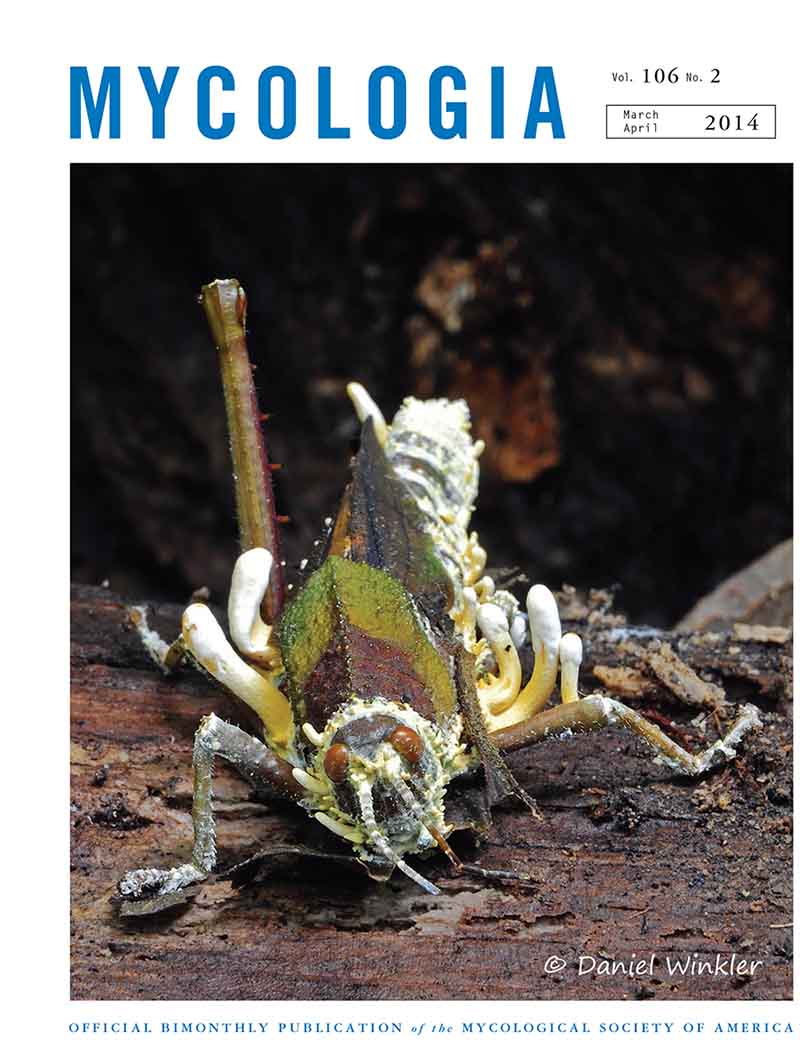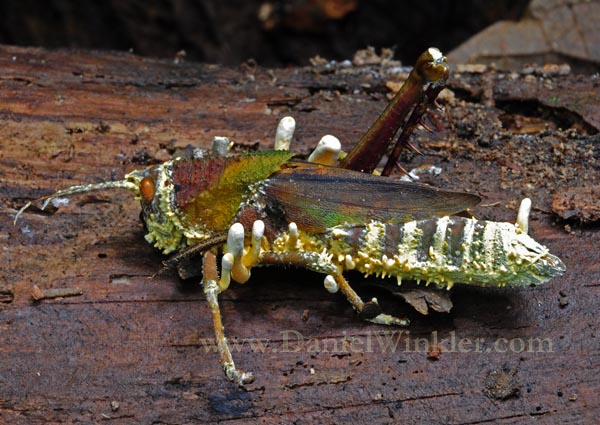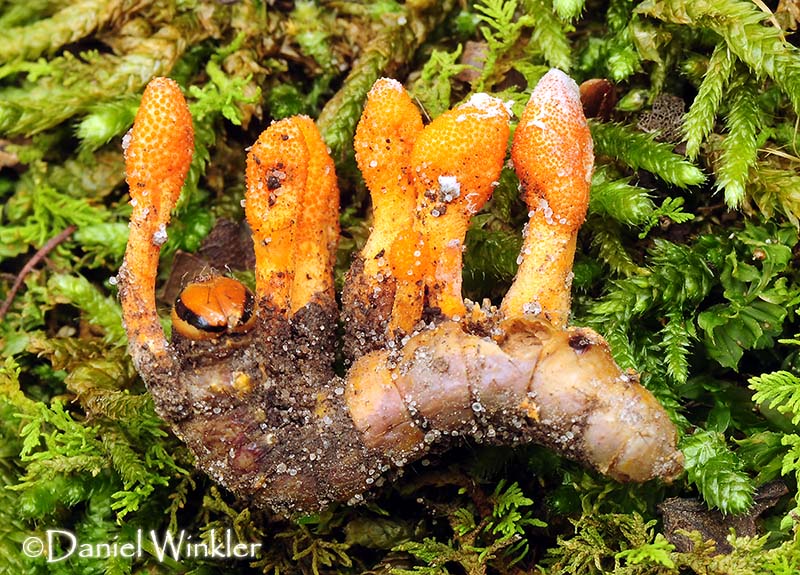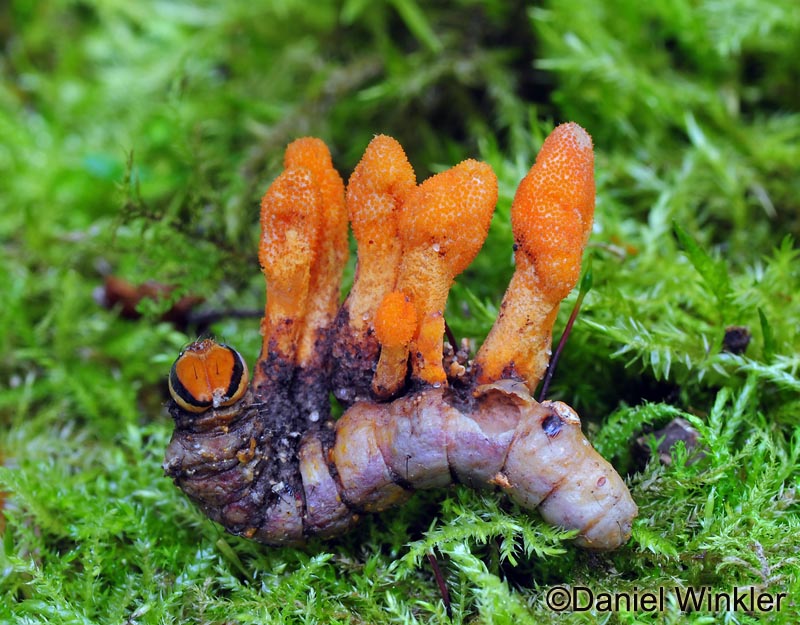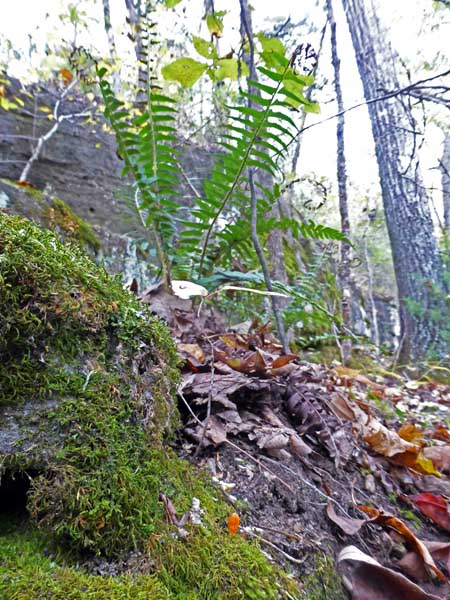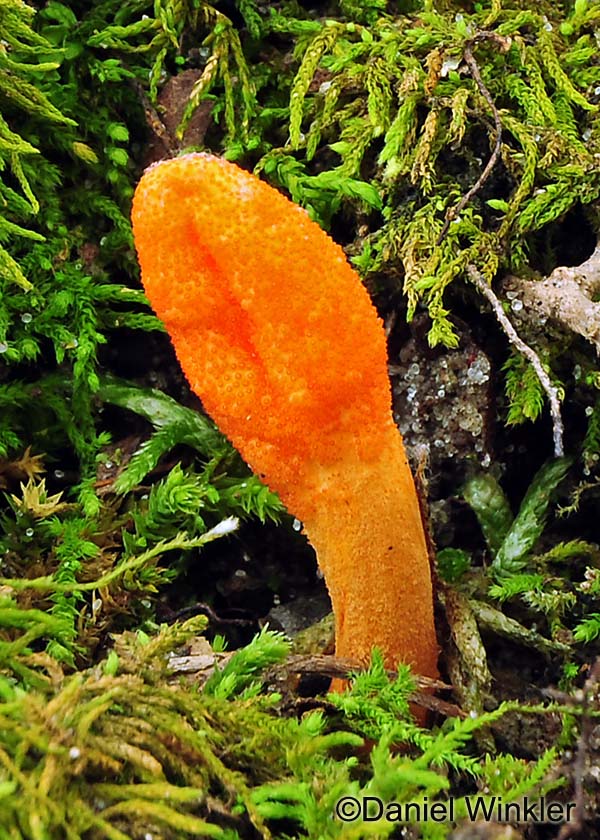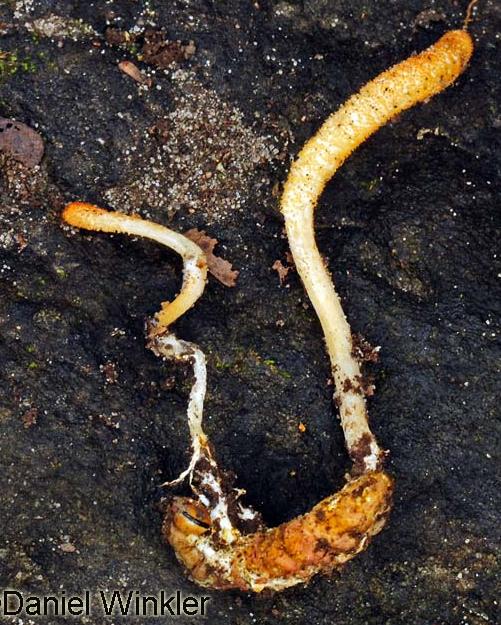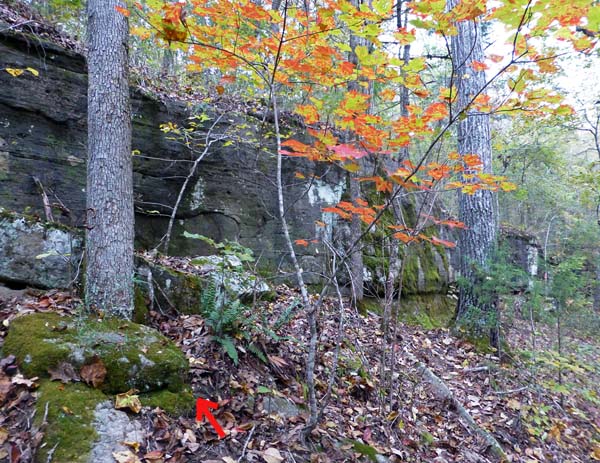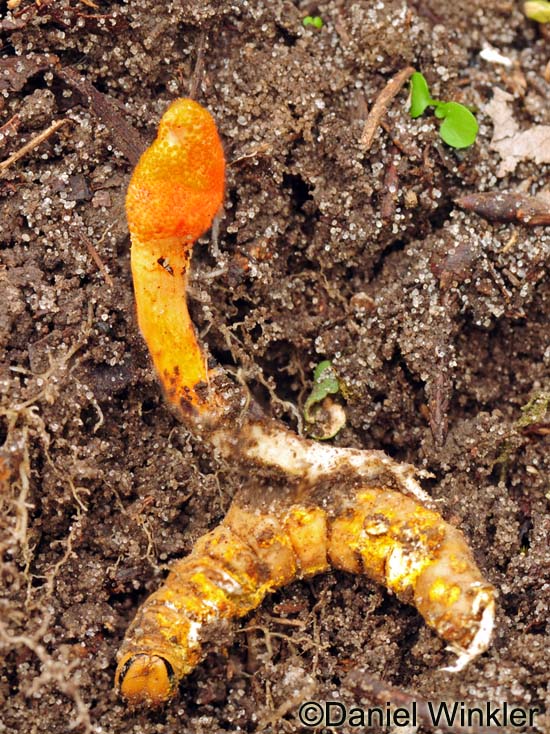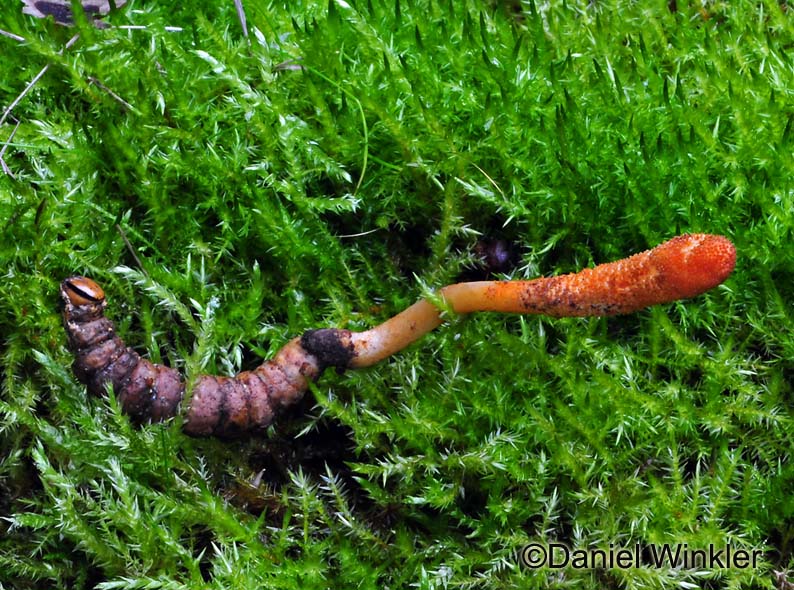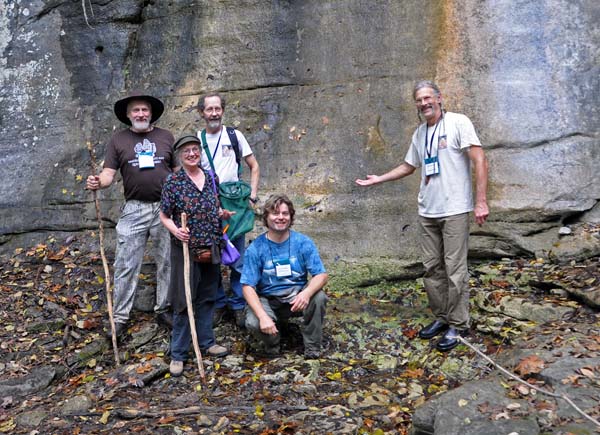Amazon Cordyceps - Mushroaming Bolivia 2014
Photos from Cordyceps fungi and allies parasitizing insects and spiders we found Mushroaming in Madidi National Park in the Bolivian Amazon in early February 2014.
Many of the identifications based solely on my photos were done with the generous help of Tatiana Sanjuan, Bogota, Colombia.
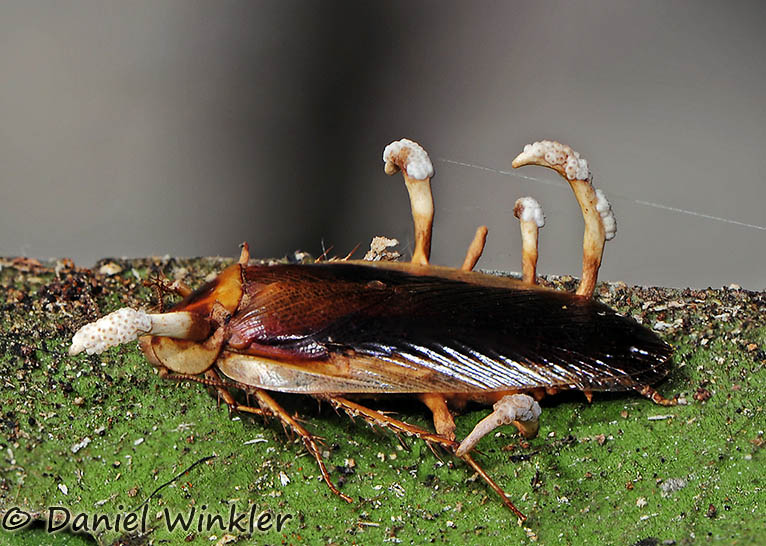
Ophiocordyceps blattae, a very rarely encountered Cordyceps growing from a Blattaria cockroach. I stacked several images to have all the fruiting bodies in focus.
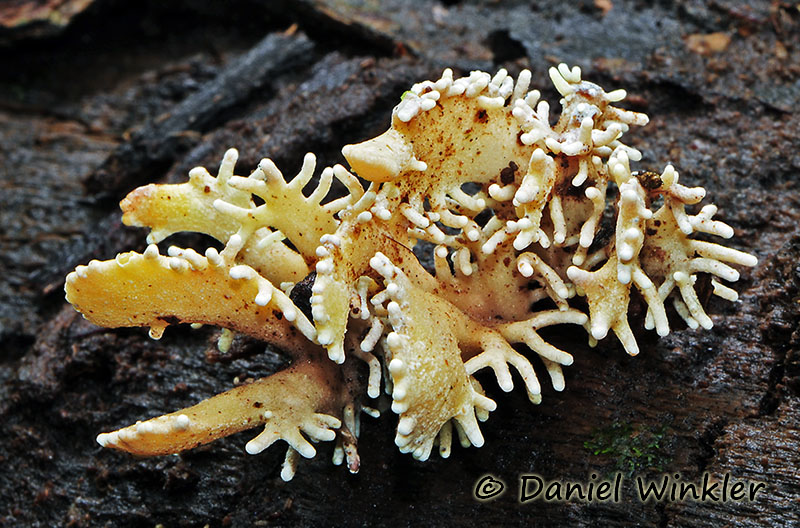
Ophiocordyceps volkiana [(Möller) G.H. Sung, J.M. Sung, Hywel-Jones & Spatafora] fruiting out of a fallen trunk. We nick-named it "Moose-antler Cordyceps".
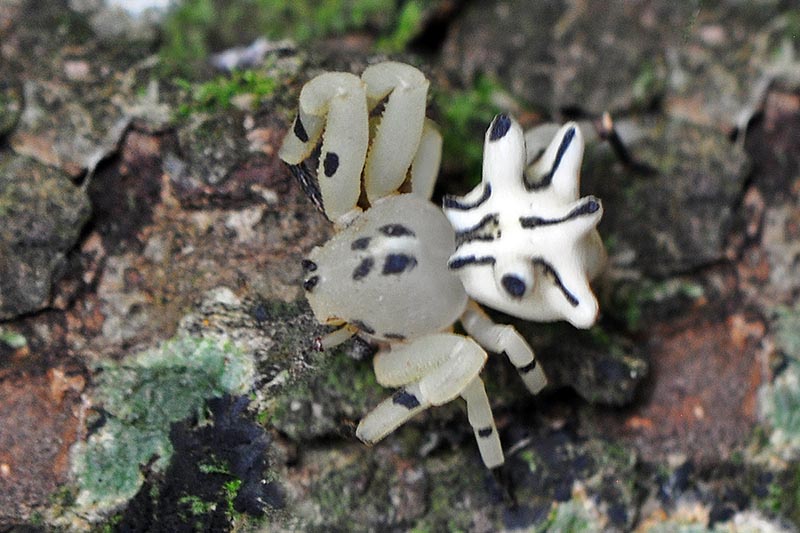
Möller, when first describing this Cordyceps in 1901, was struck by the similarity of the Cordyceps and the crab spider (Epicadus heterogaster) that pretends to be a flower when sitting on a leaf.
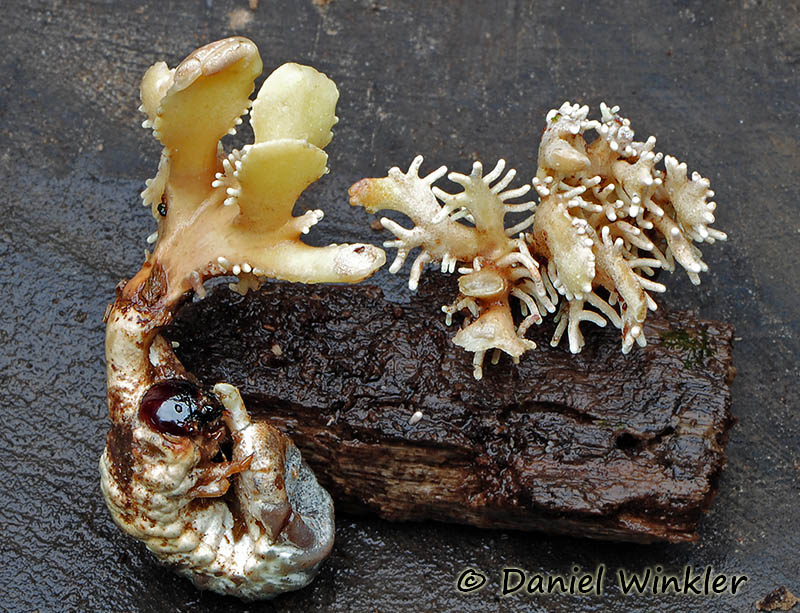
Here the excavated insect host, which seems to be a larva of a Coleoptera beetle.
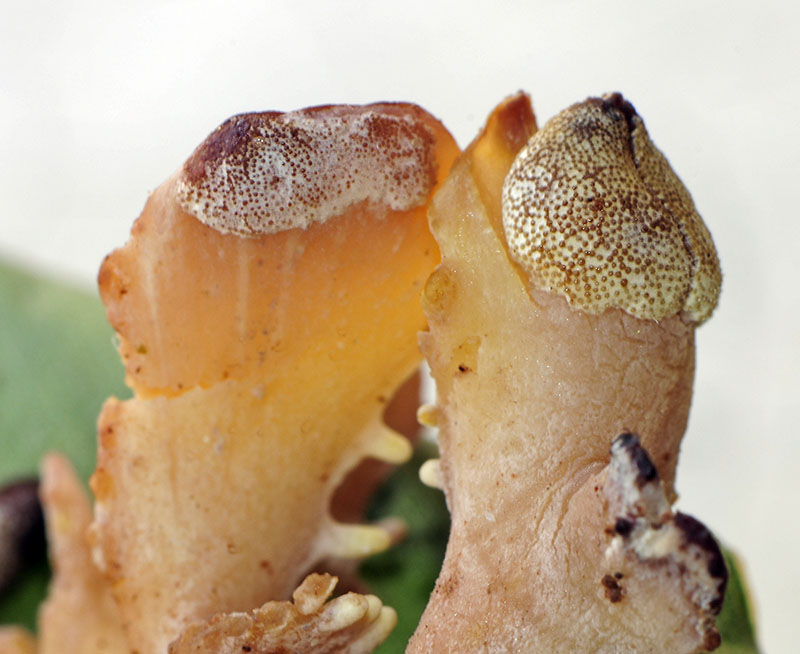
Close up of the perithecia of the Cordyceps ". I kept the insect host moist for several days and teh perithecia developed, but at some point they dried out.
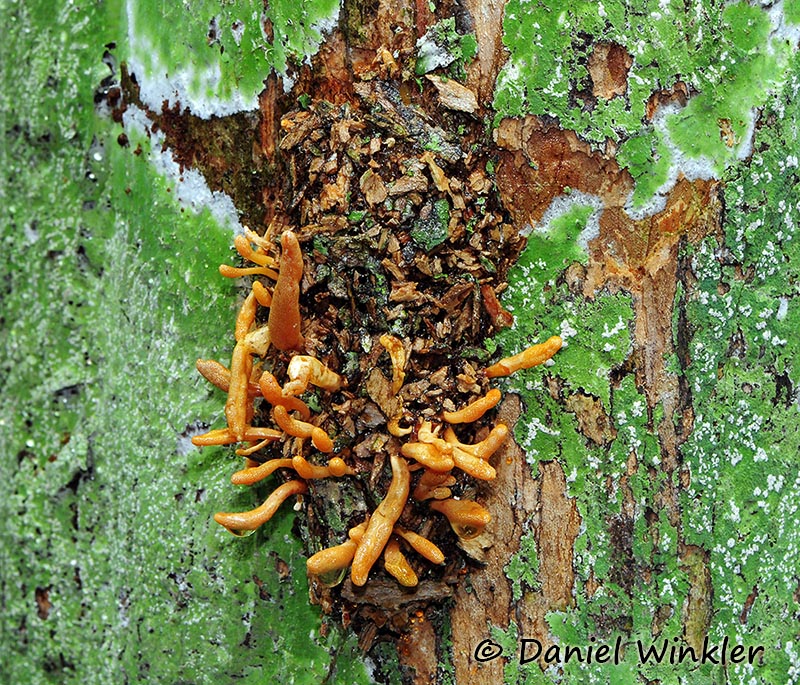
Multiple stromata growing out of a layer of pieces of bark and lichen covering an owlet moth pupa (Noctunidae, Lepidoptera, see below).
It seems like the larva chew chunks out of the Cryptothecia striata lichen from this site and stitched them together to camouflage itself when going through the pupae state. However, all that work did not help to hide from spores of a Cordyceps possibly close to Cordyceps militaris. It just "crawled" under the blanket with the larva and digested it to feed its own organism. The Cordyceps fruiting bodies were growing through the lichen blanket.
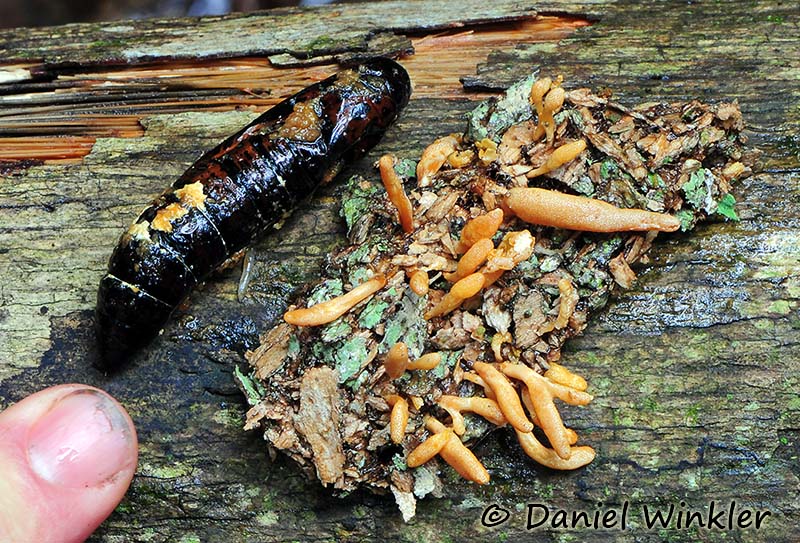
Under that layer of camouflage we found a fat Noctuida pupa.
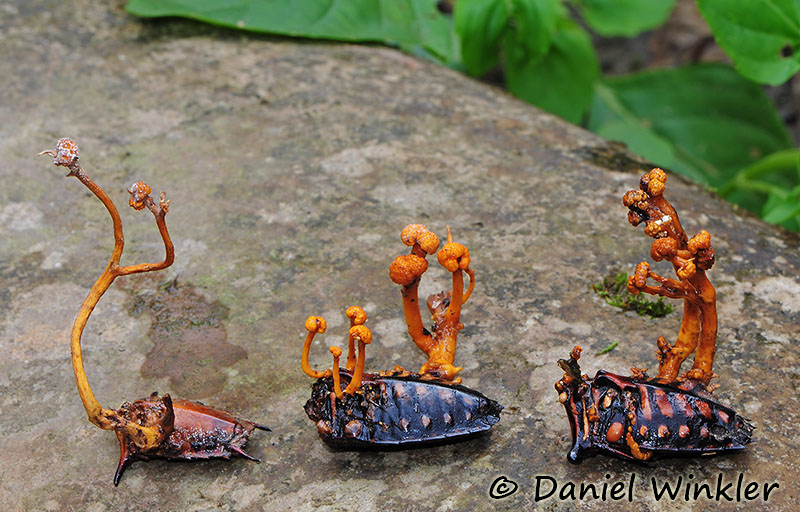
Possibly Ophiocordyceps pentatomae [(Koval) G.H. Sung, J.M. Sung, Hywel-Jones & Spatafora] growing out of adult stink bugs (Pentatomidae, Heteroptera). These specimen were found on the forest floor amongst leaves, but not really buried.
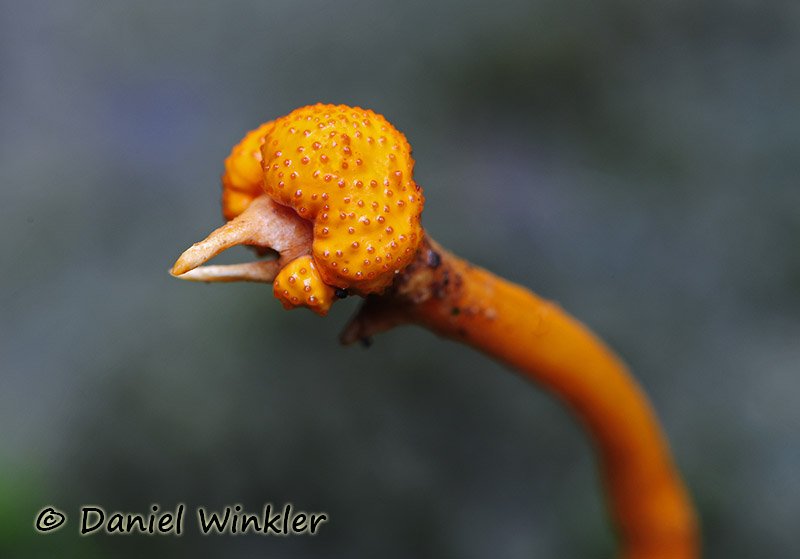
Close up of the fertile ascoma of Ophiocordyceps pentatomae and the sterile apex of the stroma.
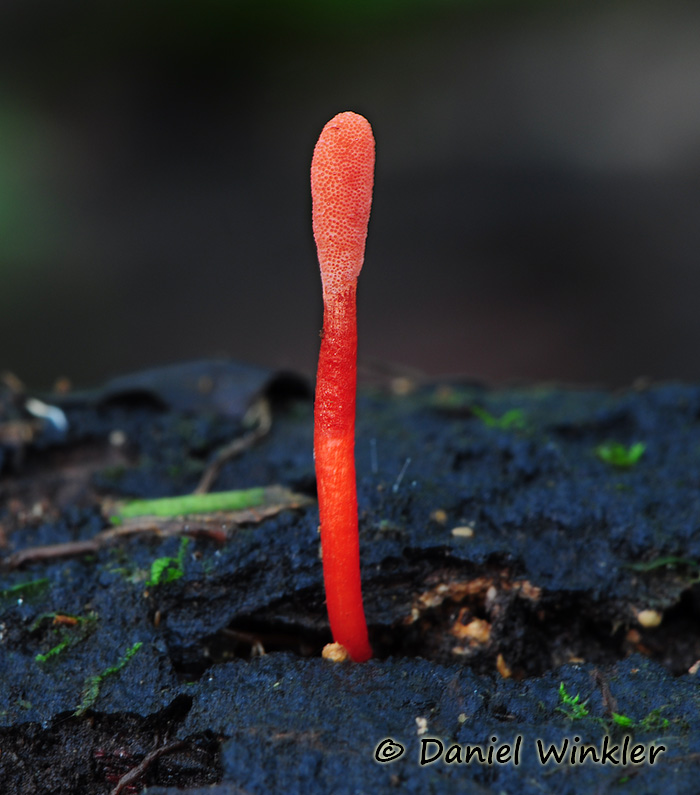
Ophiocordyceps caloceroides, a colorful spider parasite.
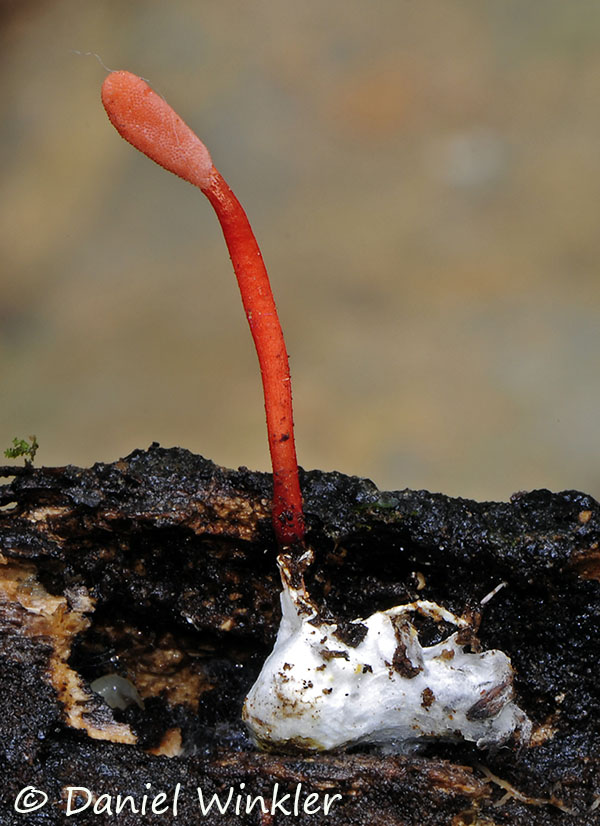
Excavated Ophiocordyceps caloceroides growing out of a spider covered in mycelium.
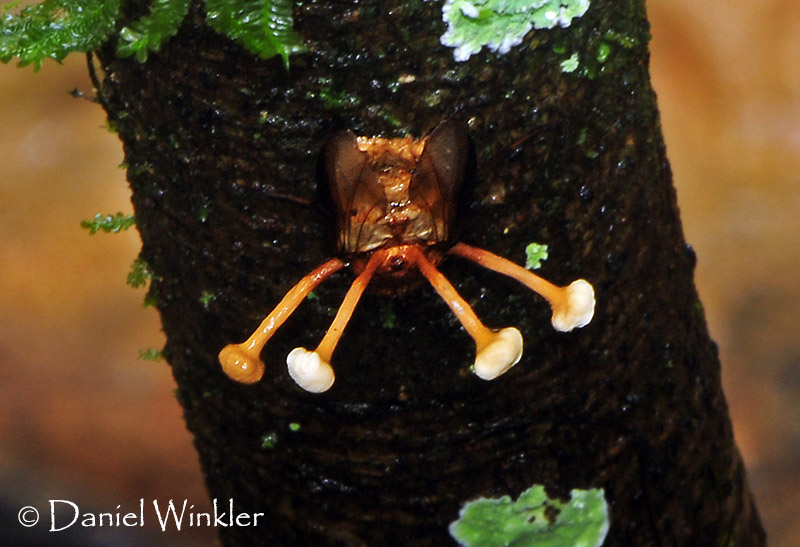
Ophiocordyceps dipterigena, one of the most frequent Cordyceps we found.
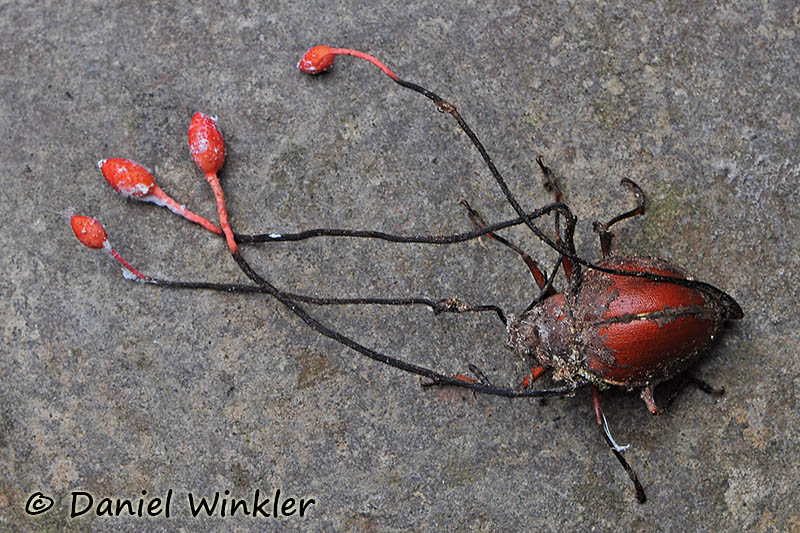
An Ophiocordyceps close to O. curculionum. I found a very similar specimen in Ecuador that was an undescribed species.
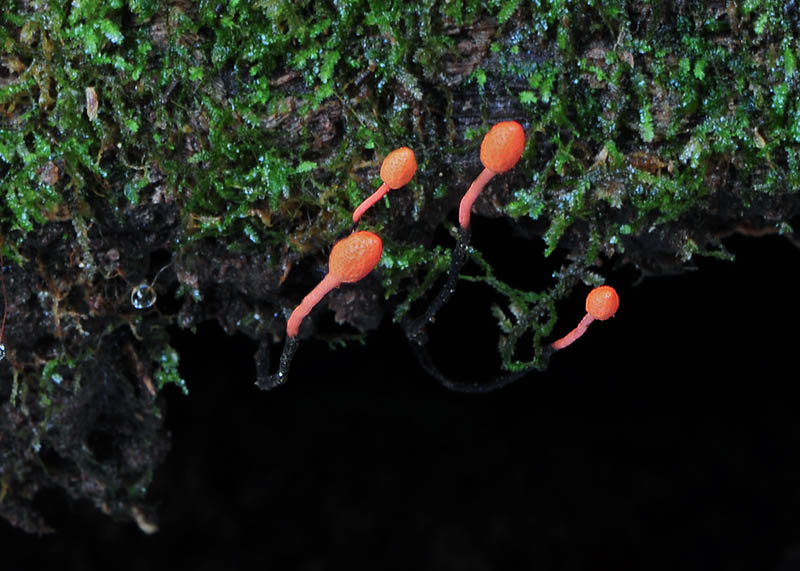
That's all we saw when we found it. Digging it out of the wood was quite a challenge. A nest with aggressive ants was on high alert when we broke the rotten log trying to extract the host insect.
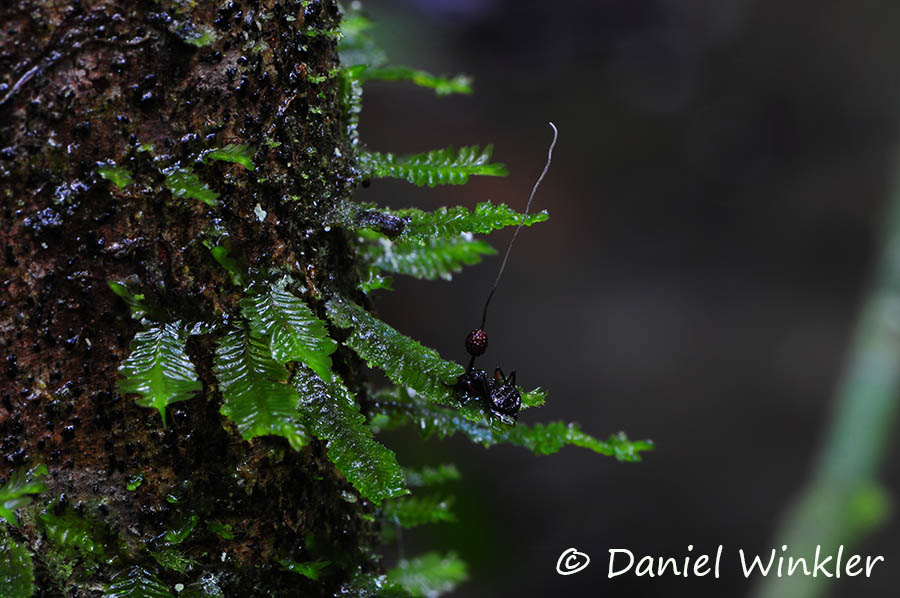
Ophiocordyceps unilateralis group
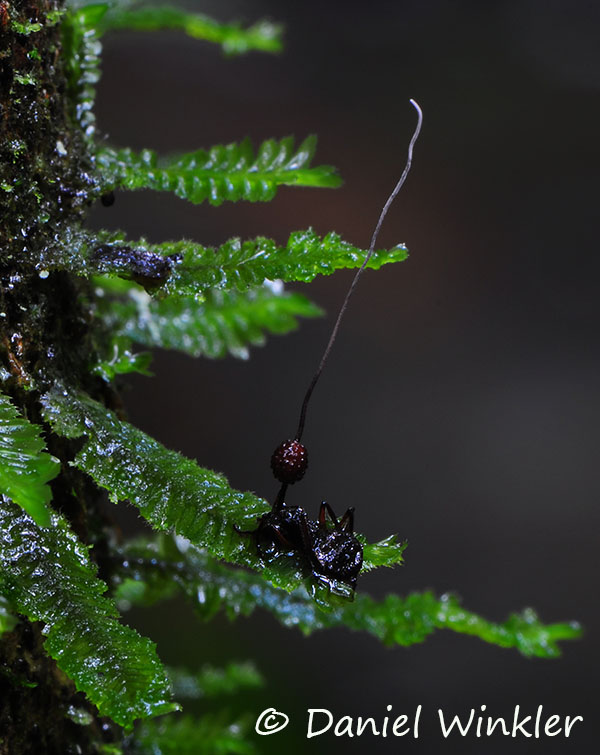
Ophiocordyceps unilateralis group
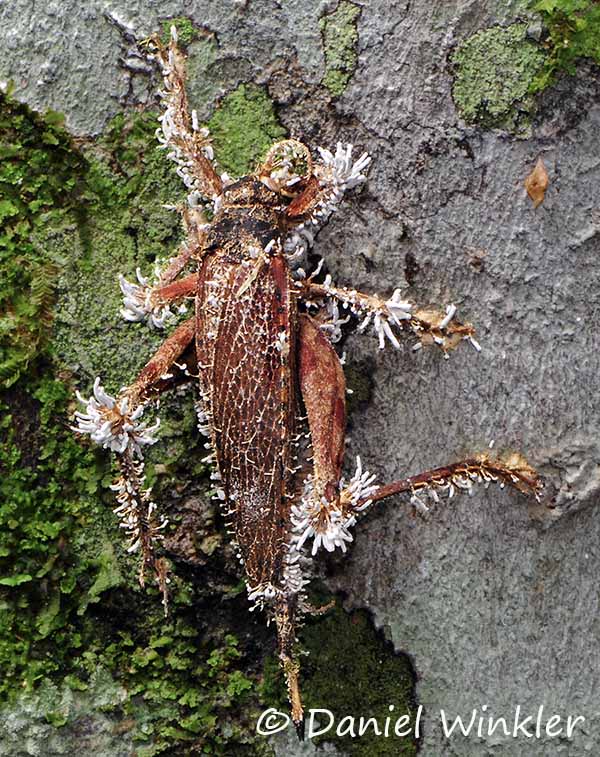
Isaria amorpha growing on a Orthoptera (Petch). The fungus attached the infested locust-like insect firmly to the lichen-covered bark.
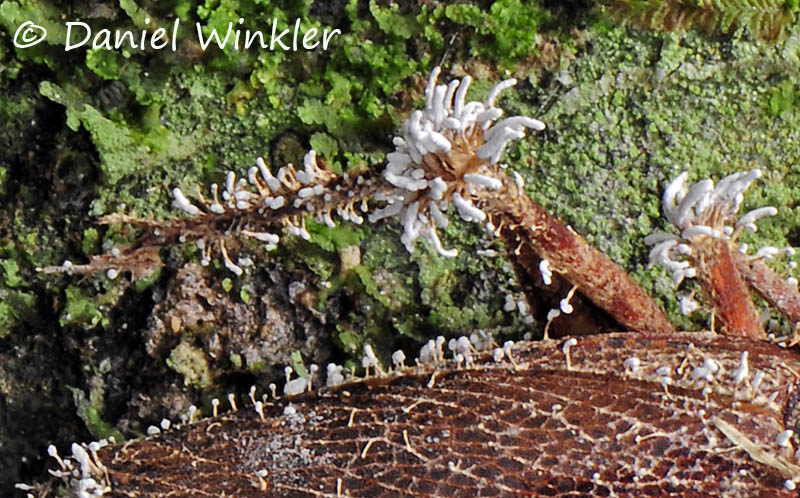
Close up of the tiny fruiting bodies of Isaria amorpha
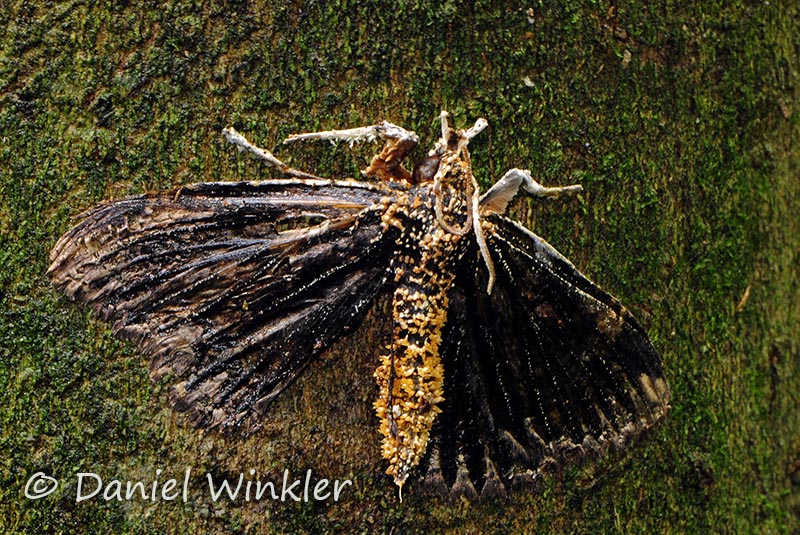
A moth with a bad case of fungal infection. Looks like a Cordyceps anamorph.
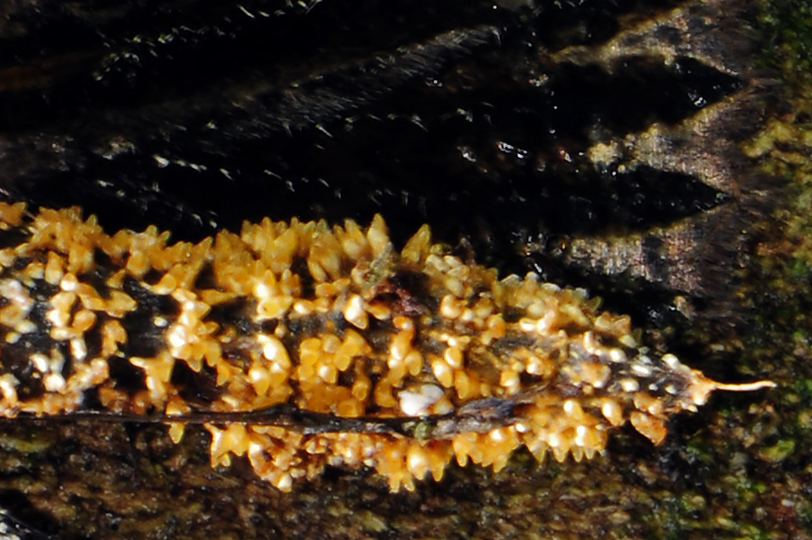
A close up of the infected moth from above. Unfortunately I did not have time to use the tripod.
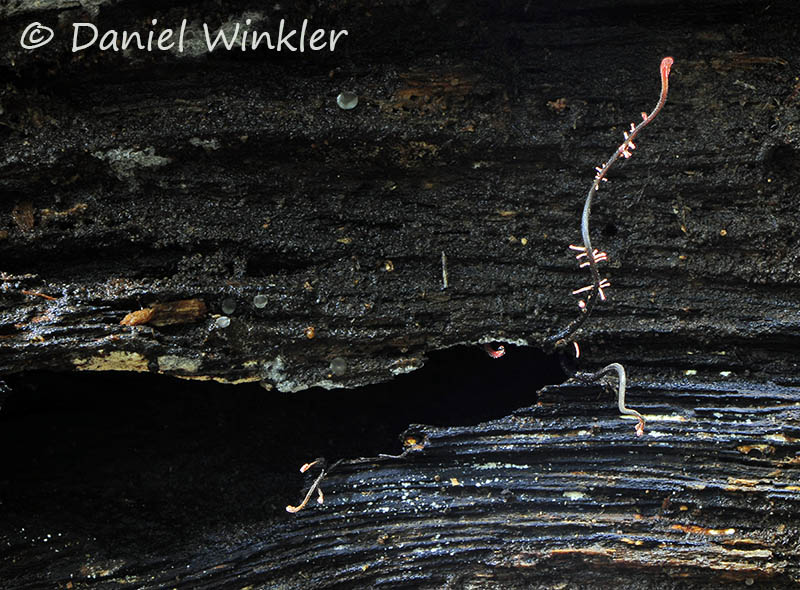
Once again we were at first not sure what we found there. Maybe some strange Xylaria? Anyway, it took us over a quarter of an hour to get to the base of the fruiting bodies, the wood was extremely hard and the access tunnel too narrow to find out if there was actually an insect on the base of the fruiting bodies.
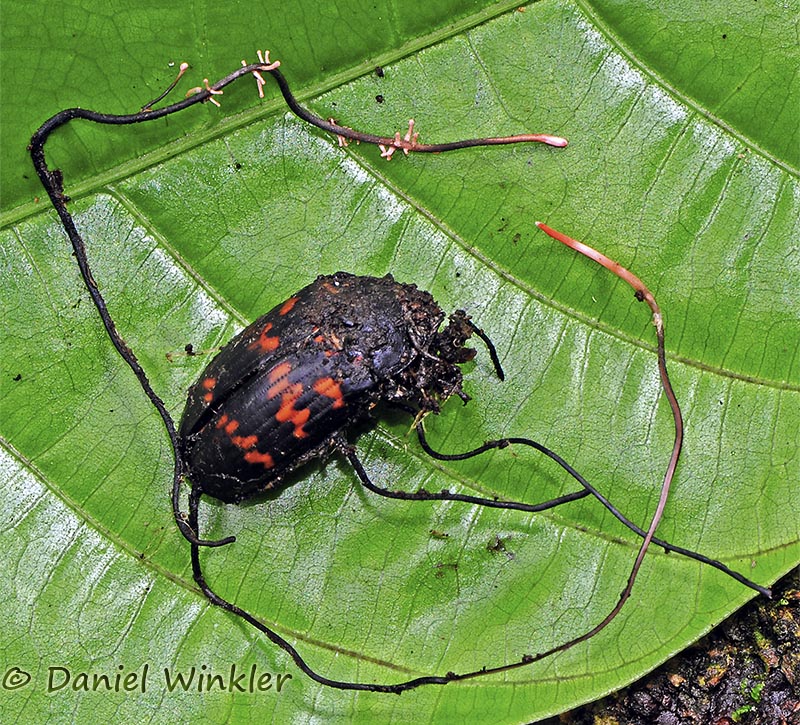
The hard work paid off. We found a host beetle with a bad case of Cordyceps. Ryan Kepler suggested it might be Ophiocordyceps erotyli with a Polycephalomyces infection.
We had previously assumed it might be Stilbella buquetii, a Cordyceps anamorph, now based on the rule 1 fungus= 1 name, transferred to Ophiocordyceps, hence O.buquetii.
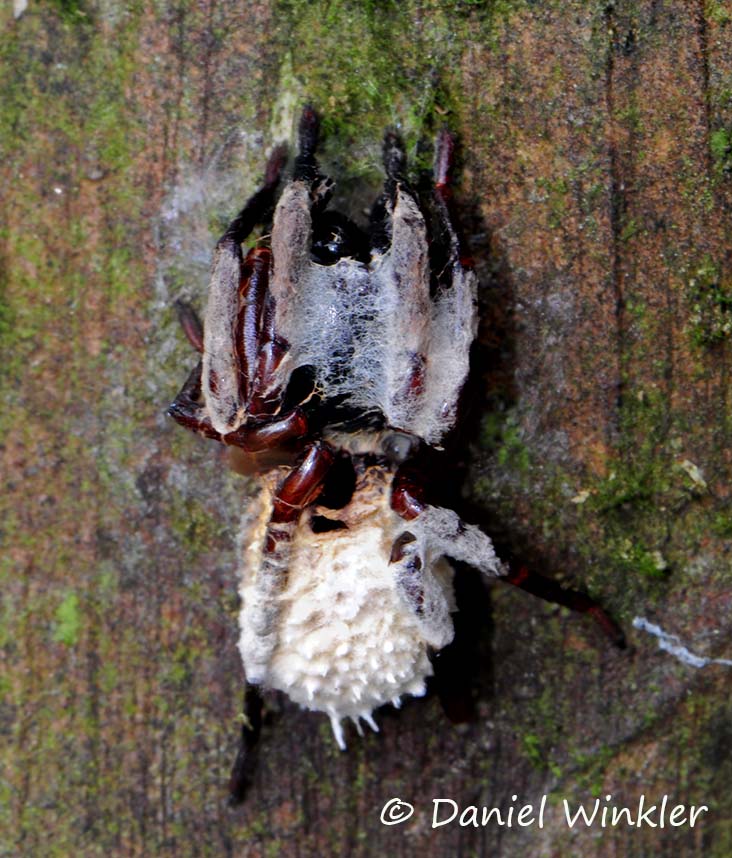
A spider caught in the net of a fungi, well, covered by the mycelium of a Torrubiella species.
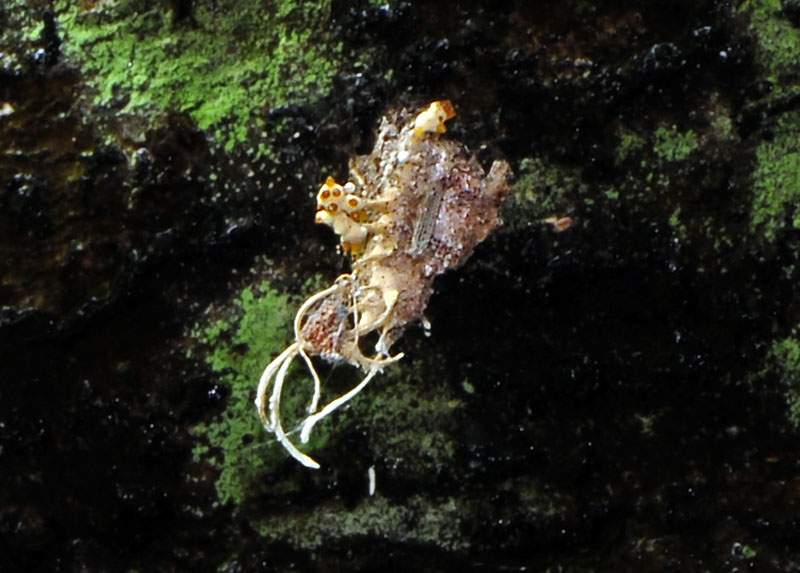
A tiny speck under a half fallen trunk. It was too high up to get a good tripod shot. I am not exactly sure what we saw there, but it seems to be a Torrubiella species.
Interesting is that there seems to be perithecia, the yellow-orange globular structures and the long white synnemata of the anamorph.
References:
Möller, A. 1901. Phycomyceten und Ascomyceten. Untersuchungen aus Brasilien. Botanische Mittheilungen aus den Tropen. 9:1-319
First uploaded May 31, 2014
Last change April 5, 2017
